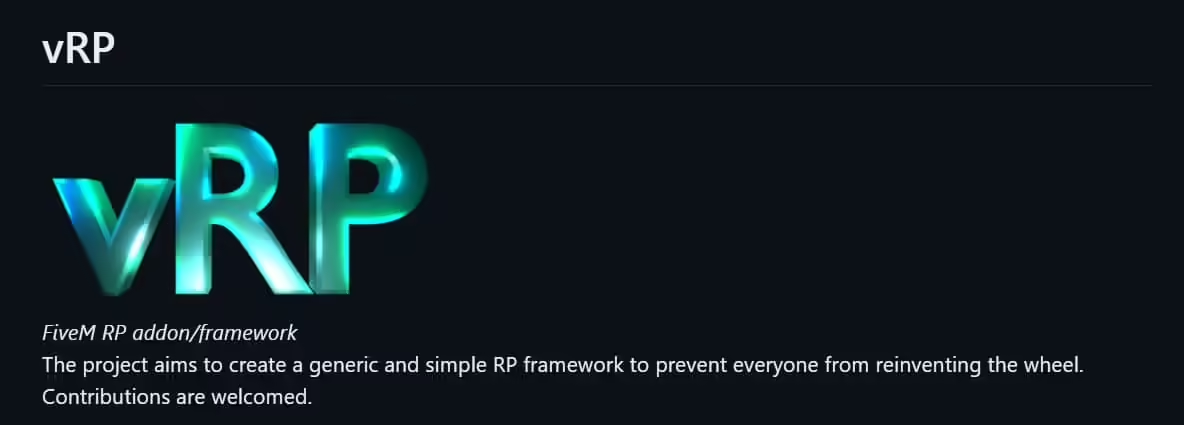How to Set Up a vRP Server (FiveM)
Creating a vRP server for FiveM can be an exciting endeavor, especially for those who enjoy immersive role-playing experiences. This guide aims to walk you through the process of setting up a vRP server, detailing each step to ensure a smooth setup and operation.
Table of Contents
1. Introduction to vRP and FiveM
vRP (Virtual Role Play) is a framework that enables complex role-playing scenarios within the FiveM multiplayer modification for Grand Theft Auto V. vRP provides various features, including job systems, inventory management, and interaction with other players and the environment, making it a popular choice among role-playing communities.
FiveM allows the creation of custom multiplayer servers for GTA V. By using vRP, you can transform a standard FiveM server into a detailed role-playing environment, where players can assume different roles such as police officers, paramedics, or criminals, enhancing the immersive experience.
Why Choose vRP?
- Flexibility: vRP provides numerous built-in features that can be easily customized.
- Community Support: There is a large community offering resources, scripts, and support.
- Extensibility: New features and jobs can be added using Lua scripts, making it ideal for developers.
2. Server Requirements and Preparation
Before diving into the installation process, ensure your system meets the following minimum requirements:
Hardware Requirements:
- CPU: Quad-core processor (e.g., Intel Core i5 or better)
- RAM: At least 8GB
- Storage: 20GB of free disk space
- Network: Stable internet connection with good upload speeds
Software Requirements:
- Operating System: Windows Server or Linux (e.g., Ubuntu)
- MySQL Server: For database management
- FiveM Server: Downloadable from the FiveM website
- Visual Studio Code: For editing configuration files
- Git: For version control
Preparation Steps:
- Install Required Software:
- Download and install Visual Studio Code.
- Install Git for managing your server files.
- Set up MySQL Server and PHPMyAdmin for database management.
- Set Up Your FiveM Server:
- Follow the FiveM server setup guide to install and configure the basic server files.
3. Downloading and Installing vRP
Step-by-Step Installation:
- Download vRP:
- Visit the vRP GitHub repository and download the latest version. Do not use the releases tab, as it might be outdated.
- Click the green “Code” button and select “Download ZIP”. Extract the ZIP file to a location on your server.
- Install MySQL Database Drivers:
- Download the MySQL resource for FiveM, commonly referred to as
mysql-async. - Extract it and place it in the
resourcesfolder of your FiveM server directory.
- Download the MySQL resource for FiveM, commonly referred to as
- Organize Your Resources Folder:
- Place the
vrpfolder and themysql-asyncfolder in theresourcesdirectory. - The directory structure should look like this:
server/ ├── resources/ │ ├── [vrp] │ ├── [mysql-async]
- Place the
4. Setting Up the MySQL Database
Database Creation and Configuration:
- Access MySQL via PHPMyAdmin:
- Log in to PHPMyAdmin using your credentials.Create a new database named
vrp.
- Log in to PHPMyAdmin using your credentials.Create a new database named
- Create a Database User:
- Navigate to the “User Accounts” tab and create a new user. Use a secure password and ensure to note it down.Grant the user all privileges to the
vrpdatabase.
- Navigate to the “User Accounts” tab and create a new user. Use a secure password and ensure to note it down.Grant the user all privileges to the
- Configure vRP to Connect to the Database:
- Locate the
cfgdirectory inside thevrpfolder and open thebase.luaor equivalent configuration file.Update the database connection details to match those of your MySQL server and the newly created database.
cfg.db = { driver = "ghmattimysql", host = "127.0.0.1", database = "vrp", user = "vrp_user", password = "your_secure_password" } - Locate the
5. Configuring vRP and Essential Files
Editing Configuration Files:
- Open
server.cfg:- Add the following lines to ensure that the server starts the required resources:
ensure mysql-async ensure vrp - Customize Server Settings:
- Modify the
cfgfiles within thevrpdirectory to set up language preferences, logging, debugging options, and other server settings. - Each file typically includes detailed comments. Read through them to understand the configuration options.
- Modify the
- Set Permissions:
- Configure admin permissions in the
permissions.cfgfile. Grant yourself super admin rights by setting your player ID with appropriate permissions.
- Configure admin permissions in the
6. Installing Additional Resources and Scripts
Commonly Used vRP Resources:
- Jobs and Economy Scripts:
- Download resources for police, EMS, taxi, and other jobs
- Place them in the
resourcesfolder and add them to theserver.cfgfile to start these resources.
- Customizing the vRP HUD:
- Modify the HUD (heads-up display) elements such as health, money, and job icons by editing the appropriate
luafiles within thevrpresource.Adjust the layout and style to match your server’s theme.
- Modify the HUD (heads-up display) elements such as health, money, and job icons by editing the appropriate
- Player Interaction Scripts:
- Integrate scripts that enhance player interactions, such as emotes, in-game messaging, or item trading.
- Ensure these scripts are compatible with vRP to avoid conflicts.
Tips for Script Installation:
- Always check for dependencies when installing new scripts.
- Regularly back up configuration files before making significant changes.
- Test each script individually to ensure compatibility.
7. Troubleshooting Common Issues
Common Problems and Solutions:
- Database Connection Errors:
- Verify that your database credentials in the vRP configuration match those set up in MySQL.
- Check for firewall settings that might block database connections.
- Resource Not Starting:
- Ensure that the resource is correctly listed in the
server.cfgfile. - Look for syntax errors or missing files within the resource directory.
- Ensure that the resource is correctly listed in the
- Lua Script Errors:
- Use the debugging mode by setting
debug truein your configuration files. This will provide detailed error logs. - Review the error message to pinpoint the file and line number causing the issue.
- Use the debugging mode by setting
8. Useful Resources and Links
- FiveM Documentation
- vRP GitHub Repository
- MySQL Download
- PHPMyAdmin
- FiveM Forums
- vRP Installation – Video Tutorial
These resources offer valuable insights and additional scripts to enhance your vRP server.
9. Optimization and Server Enhancement Tips
Performance Optimization:
- Regular Updates:
- Keep your vRP and FiveM server files up to date to benefit from the latest features and security patches.
- Resource Management:
- Disable unused resources to reduce server load. Monitor resource usage using the FiveM server console.
- Database Optimization:
- Regularly clean and optimize your database to prevent lag. Use MySQL optimization tools and scripts.
- Implement Anti-Cheat Mechanisms:
- Use popular anti-cheat plugins to protect your server from malicious activities.
10. Conclusion and Next Steps
Setting up a vRP server for FiveM offers endless possibilities for creating an engaging role-playing environment. By following the steps outlined in this guide, you will have a functional server that can be customized to your liking. Remember to experiment with different scripts, continually optimize your setup, and engage with the FiveM community to improve your server further.
This comprehensive guide should provide a solid foundation for setting up and maintaining a vRP server for FiveM.









Add comment